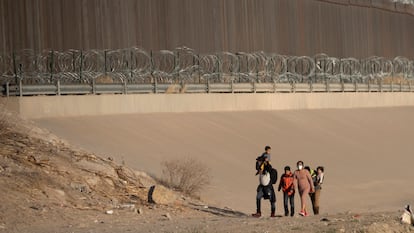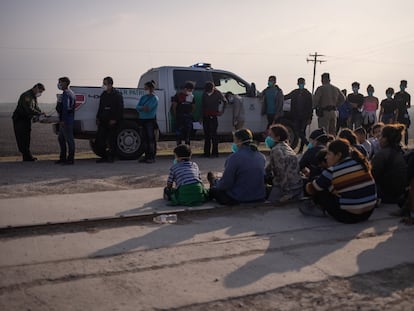Central Americans’ hopes for Biden end at the Mexico-US border
Many migrants are making the perilous journey, dreaming of a chance at a life in America under the new president of the United States. But this is what really happens when they get there
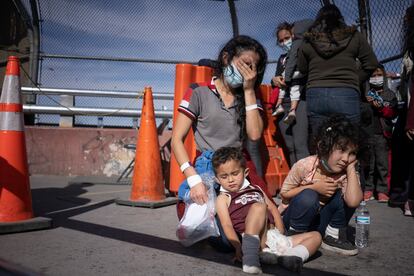

The mothers with babies in their arms asked the same question over and over as they crossed the bridge that links El Paso, Texas to Ciudad Juárez in Mexico: “Where am I? What country is this?” A new flood of migrants from Central America is making its way to the United States, emboldened by false news reports back home that US President Joe Biden would now welcome parents with young children.
At the border between the United States and Mexico last week, the migrants’ dream was extinguished under the watchful eye of US border patrol officers, proceeding in a single-file line making its way back down south into one of Mexico’s most dangerous cities. Shuffling in line with their shoelaces removed, they clutched the few possessions they had brought on their long journey: battered cell phones, documents, aspirin packs and wooden crosses.
Vilma Iris Peraza, 28, arrived exhausted, thin and coughing. She could barely walk and soon collapsed on the bridge, holding the hand of three-year-old Adriana. The toddler was as exhausted as her mother, and vomited on the boots of the border agents standing guard by the plaque marking the division between Mexico and the US. “They tricked us! They tricked us!” Peraza shouted when she recovered some strength. “They told us we were going to a shelter in northern United States, they never told us we would be deported.”
Peraza had begun her odyssey two weeks earlier in Honduras. She saw on the news that the Biden administration would now allow women with children under the age of six to enter and get their papers, and to live and work in the United States. Her chance had come. With the aid of a pollero (people smuggler), she crossed through Guatemala into Tabasco State in Mexico, made her way up the country’s spine and all the way to Reynosa, a town in the border state of Tamaulipas. The US was now a 15-minute drive away.
In Reynosa, she waited with other migrants from Honduras, Guatemala and El Salvador until she crossed the border at the point her smuggler had told her about. She spent just a few hours of freedom in the US before being arrested in the Texan city of McAllen. The migrant detention center was so cold they christened it la hielera (the icebox), and she and her children spent four days there before they were flown to El Paso, Texas, a full 1,200km from where they were detained. On the bridge back to Mexico, the migrants were told to walk in a straight line without stopping until they were off American soil, in daily groups of 150-200 at a time.
José Dámaso, another Honduran, had a question for the US authorities: “Why do they do this to us?” He recounted how his fingerprints and phone number were taken, and explained the long journey from the “icebox” to El Paso. “I just want to ask the US government for one opportunity. We came here with the dream of giving our children a better future.”
Leaning on the railings with his wife, Norma López, the couple wept with their heads in their hands, as their two children clung to their legs. “They tricked us, they tricked us, why are they doing this to us?” he repeated. He said he was not permitted a hearing with a judge to explain how they crossed three countries fleeing violence.
None of the migrants interviewed by EL PAÍS were informed that they would be sent back to Mexico, and it was often only as they walked over the bridge and saw the Mexican flag that they began to realize everything was falling apart. In many cases these are farmers and peasants who used the value of their homes to borrow between $10,000 and $15,000 to pay the pollero to help them cross the border.
“Don’t come”
Back in Honduras, a message now booms repeatedly from local radio stations. It is a US government ad telling Hondurans: “Don’t come and put your family and children’s lives at risk. Don’t expose yourself to the dangers of the journey. This is a US government message.” It’s a male voice, and the message is pitched somewhere between supermarket and soap brand advertisements. As if that was not clear enough, Joe Biden and Roberta Jacobson, Coordinator for the Southwest Border, have repeated it several times in recent weeks. “The message isn’t, ‘Don’t come now,’ it’s, ‘Don’t come in this way, ever,’” Jacobson told the news agency Reuters in an interview. “The way to come to the United States is through legal pathways.”
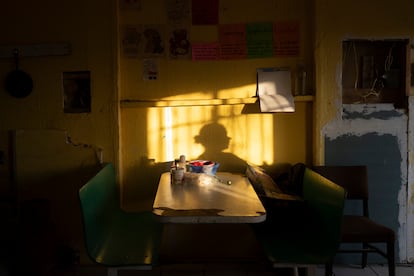
The number of migrants attempting to cross the US border has been on the rise since April. The 100,441 people counted in February represented the highest figure for the last two years. Border arrests during the final months of Donald Trump’s presidency reached some of the highest levels in a decade, and illegal crossings have skyrocketed since Biden took office. In February, arrests grew 28% over the previous month, and in March the number should hit around 4,000 per day, according to United States Customs and Border Protection. Since October 1, the authorities have recorded more than 396,000 migrant crossings compared to 201,600 during the same period last year.
The Biden administration has faced intense criticism from opposition Republicans claiming that Biden’s relaxation of some of Trump’s policies has encouraged Central Americans to make the journey. Containment facilities in Texas are overflowing, which has forced temporary shelters to open: a parking lot in El Paso, a convention center in Dallas, a NASA compound in California and a camp in Arizona.
Meanwhile, the number of unaccompanied children has skyrocketed. Although they travel with their parents from Central America, many separate in the hope that they can begin the legalization process rather than return to the poverty and violence from which they fled. In March, 561 unaccompanied children were detained on a single day, breaking the record of 370 minors arrested in May 2019 under Trump. According to the Associated Press news agency, the daily average was 332 unaccompanied children in February, a 60% increase over January.
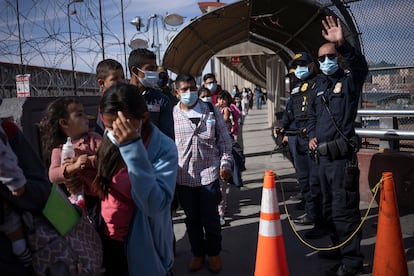
The chaos comes from the confusion of Trump’s old policies, which forced Central Americans to claim asylum in Mexico, and the new measures approved by Biden, accepting a trickle of migrants amounting to 50 people daily. Mexico’s aggressive response to migrants in transit and a series of natural disasters in the last year have also aggravated the situation for Central Americans. Added to this is a pandemic still in full swing. Mexico decided to close its southern border on March 19 and deployed thousands of National Guard troops and National Migration Institute staff to halt the arrival of Central Americans. Shortly afterwards, Washington announced that it would send 2.5 million leftover AstraZeneca vaccines to Mexico. Both governments say there is no connection, but US pressure on Mexico to help solve the immigration problem is growing.
The legacy of Trump’s wall
“The wall” and border security were the centerpiece of Trump’s successful 2016 presidential campaign, and he has returned to the issue frequently since leaving power. Trump leads the chorus of those shouting “border crisis”, conveniently dispensing with the fact that this trend began when he was still president.
In fact, the upsurge in migrant arrivals has less to do with the change of president than with persistent violence, political instability and two hurricanes, Eta and Iota, that hit Central America in November. Enrique Valenzuela, general coordinator of the Chihuahua State Population Commission, said the expulsions were taking place under the pretext of Covid-19. “[They] are being expelled under the so-called Title 42, which is linked to health policy, not to immigration policy,” he said. Chihuahua State is where the migrants enter over the bridge from El Paso. “As long as the risk of the pandemic exists, they will continue to send people back who enter with the intention of requesting international protection.”
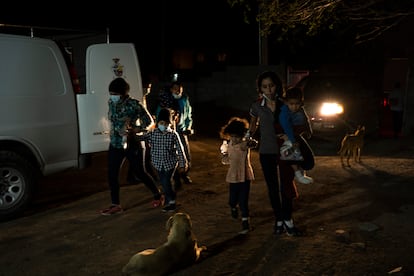
Before Valenzuela finishes his sentence, three more buses arrive at the bridge and nearly a hundred terrified Central Americans are forced to get off and walk in a straight line toward Mexico. “They arrive in great distress because they entered with the hope of gaining political asylum,” explains Valenzuela, adding that many are unclear about who can enter the US and why. “They are deceived by the traffickers and get confused by those who are registered in the Migrant Protection Program, as after waiting up to two years in Mexico, those people have begun to gain access to the US after registering with the United Nations, thanks to the change in the law ordered by Biden.”
The Democrats refuse to speak of a border crisis and prefer the euphemism “challenge” to reassure Americans they have not lost control of the border. They point out that in the year 2000, some 9,000 border patrol agents detained, on average, almost 137,000 undocumented immigrants each month. Between October and February the average was just over 76,000, but the number of enforcement officers has doubled.
At the oldest shelter in Ciudad Juárez, director Father Francisco Javier Calvillo is overwhelmed by a humanitarian task that religious and civil organizations are solving more through sheer determination than money. He isn’t sure there is much difference between Trump and Biden after all. “The first bangs his fist on the table and threatens Mexico with tariffs to achieve his goal, while the second uses diplomacy and vaccines to achieve the same result: no more migrants coming into the US.”
